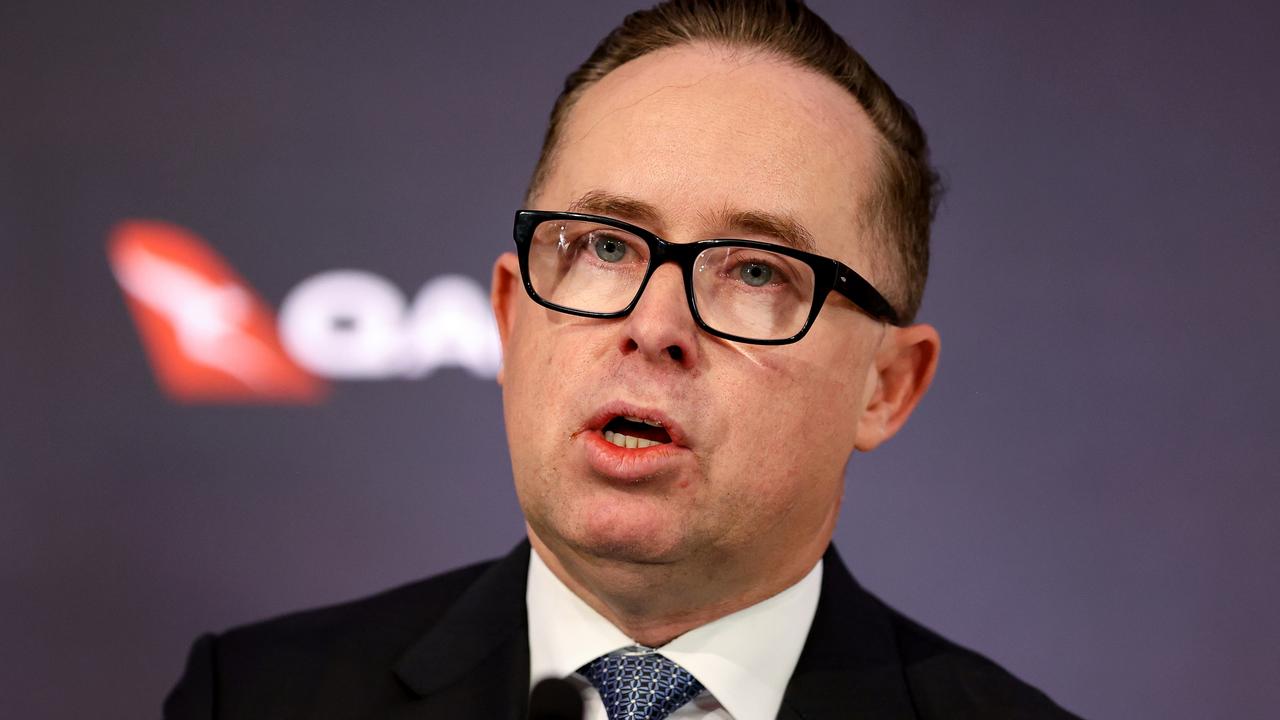Alan Joyce accused of ‘leaving a financial mess’ for next Qantas CEO
Qantas boss Alan Joyce has come under fire for not prioritising upgrades of the airline’s ageing fleet, as he is accused of leaving a “mess” for his successor.
Qantas expects to get one new aircraft on average every three weeks for the next three years, as the airline faces questions over an ageing fleet.
A senior staffer at Qantas has accused Alan Joyce of “leaving a financial mess” for the next chief executive of the airline.
But news.com.au understands Qantas will have up to about 52 new aircraft across Qantas and Jetstar in the next three years, which includes six A321 Neos already delivered to Jetstar.
Mr Joyce is expected to retire as Qantas’ boss at some point this year.
In a report by The Australian on the airline’s ageing fleet – described as its “oldest average plane fleet age in living memory” at 15.4 years, including freighters – it was claimed “numerous former top-level executives” were shaking their heads.
Why? They were said to be unimpressed with the idea that Mr Joyce and his team no longer considered fleet age a main strategic imperative.

Qantas group treasurer Greg Manning told The Australian average age was not the main factor in the company’s fleet planning process and hadn’t been “for some time”.
“For the period of time we keep most aircraft, we’ll replace the cabins and replace or refurbish engines, so it’s not as simple as the date of manufacture,” he said.
But The Australian reported this stance was a “significant change” from previous management who liked to keep the average age of a plane in Qantas’ fleet at about 10 years. This was said to be done for better fuel efficiency, longer range and greater reliability.
Perhaps the most damning comment in the report came from an unnamed senior staffer.
“[Mr Joyce] is leaving a financial mess for the next CEO to contend with and it was a mess that was developing long before Covid,” they said.
If the new chief executive disagrees with management’s current stance that fleet age is not a main factor in fleet planning, the publication reported it would cost more than $20 billion to rebuild the fleet and get the average age closer to 10 years, within six years.

On the back of criticism of Qantas’ ageing fleet, Simple Flying, a global aviation news and insights website, published a breakdown of the airline’s fleet on the weekend.
It said Qantas’ average fleet age of 15 years was the highest of any major international airline in Australia, adding that the average age of a plane is about 10 years at regional competitors Cathay Pacific, Emirates, Qatar Airways and Singapore Airlines.
The oldest aircraft in Qantas’ fleet was listed as an Airbus A330-200 at 21 years, while the youngest was a Boeing 787-9 Dreamliner at four years.
When contacted for comment on the criticism of its fleet age, Qantas directed news.com.au to previous announcements about orders.
As part of “Project Sunrise” there is an order of 12 Airbus A350-1000s capable of flying non-stop from Australia to any other city, which are expected begin taking off from Sydney in late 2025.
The A350s, whose first and business class cabins were unveiled this year, will take around 20 hours to reach New York and London.

Domestically, there is “Project Winston” which includes an order of 20 Airbus A321XLRs and 20 A220-300s as Qantas’ Boeing 737s and 717s are gradually retired.
The first of these aircraft were expected to start to arrive in late 2023, with the order including purchase right options for another 94 aircraft for delivery through to at least 2034.
At the time of the announcement of the orders in May last year, Mr Joyce said it was “the largest aircraft order in Australian aviation”.
“The A320s and A220s will become the backbone of our domestic fleet for the next 20 years, helping to keep this country moving,” he said.
“Their range and economics will make new direct routes possible, including serving regional cities better.
“These newer aircraft and engines will reduce emissions by at least 15 per cent if running on fossil fuels, and significantly better when run on Sustainable Aviation Fuel. This order brings us closer to our commitment to reach net zero emissions by 2050. Project Sunrise will be carbon neutral from day one.”
In an update in February this year, Mr Joyce said some of the new aircraft on order would be delayed up to six months due to supply chain issues. In response, Mr Joyce said the company would wet lease more aircraft from Alliance Airlines and buy a number of secondhand A319/320s.
Once an aircraft is retired from taking passengers, it typically goes on to be used for freight or even have a life with another airline.
Qantas posted a $1 billion profit for the six months to December 31 last year, dramatically turning around its fortunes from a $456 million loss for the same period a year earlier.
The airline returned an underlying profit before tax of $1.43 billion for the first half of FY23 – it had a statutory profit after tax of $1 billion.
Its net debt also decreased to $2.4 billion. Qantas said its return to profit came after three years and $7 billion of cumulative losses due to the pandemic.
Mr Joyce described it as a “huge turnaround considering the massive losses we were facing just 12 months ago”.






